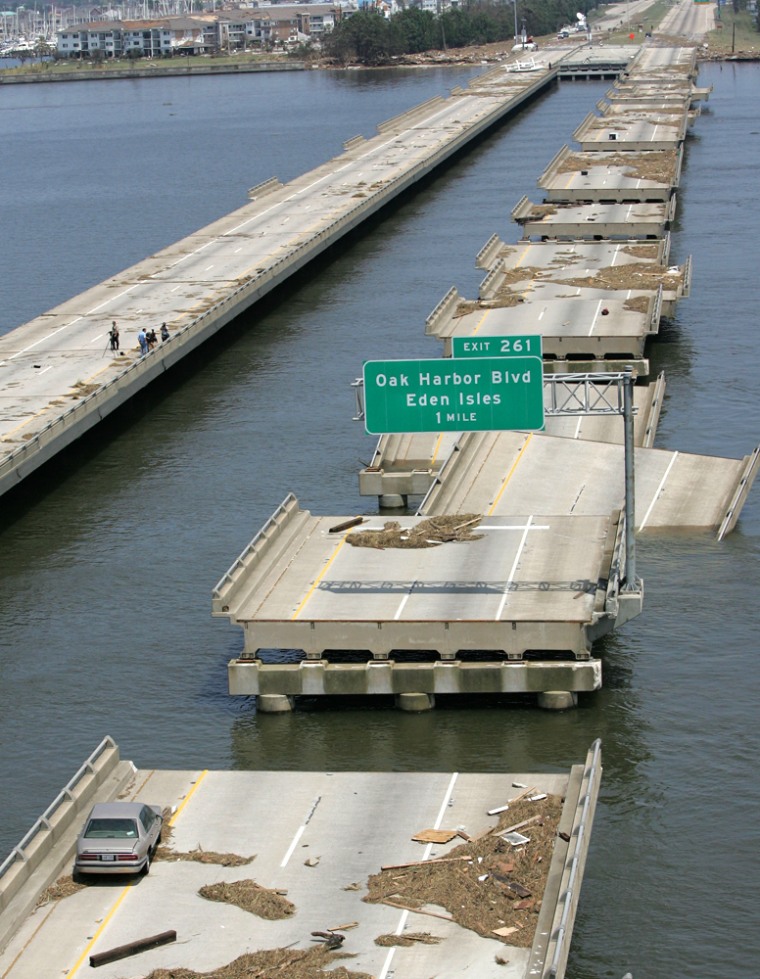Expect flooded roads and runways, twisted railroad tracks and weakened bridges brought on by rising sea levels and more intense storms tied to global warming, leading U.S. experts warned in a report released Tuesday.
Climate change will affect every type of transportation, the experts convened by the National Research Council said.
"The time has come for transportation professionals to acknowledge and confront the challenges posed by climate change and to incorporate the most current scientific knowledge into the planning of transportation systems," committee chairman Henry Schwartz Jr. said in a statement.
"Rising temperatures may trigger weather extremes and surprises, such as more rapid melting of the Arctic sea ice than projected," added Schwartz, past president and chairman of the engineering firm Sverdrup/Jacobs Civil Inc. "The highways that currently serve as evacuation routes and endure periodic flooding could be compromised with strong hurricanes and more intense precipitation, making some of these routes impassable."
The storm that has been a once-in-a-hundred-years event may become a once-in-50-years, Schwartz said at a press briefing, adding that planners need to ask: "What is the proper level to design for?"
"Much of the damage will be in coastal areas, but the impact will affect all areas of the country," Schwartz said. "It’s time to move from the debate about climate science to 'What are we going to do about it ... how are we going to adapt to it?'"
Luisa Paiewonsky, commissioner of the Massachusetts Highway Department said her state is beginning an inventory of low-lying infrastructure because of the danger of sea-level rise.
Thomas Karl, director of the National Climatic Data Center, said “an important message of this report is to begin incorporating that into design and planning.”
The probable costs of such improvements were not analyzed in the report, but Schwartz said the costs would be significant. However, he added, it would be less costly to prepare in advance than to deal with a catastrophe.
The committee called for "a more strategic, risk-based approach to investment decisions that trades off the costs of making the infrastructure more robust against the economic costs of failure."
Five areas of concern
The experts cited five major areas of growing threat:
- More heat waves, requiring load limits at hot-weather or high-altitude airports and causing thermal expansion of bridge joints and rail track deformities.
- Rising sea levels and storm surges flooding coastal roadways, forcing evacuations, inundating airports and rail lines, flooding tunnels and eroding bridge bases.
- More rainstorms, delaying air and ground traffic, flooding tunnels and railways, and eroding road, bridge and pipeline supports.
- More frequent strong hurricanes, disrupting air and shipping service, blowing debris onto roads and damaging buildings.
- Rising Arctic temperatures thawing permafrost, resulting in road, railway and airport runway subsidence and potential pipeline failures.
The nation’s transportation system was built for local conditions based on historical weather data, but those data may no longer be reliable in the face of new weather extremes, the experts warned.
One example that the experts cited was the loss of the bridges and roadways due to Hurricane Katrina.
The committee said proper preparation will be expensive and called on federal, state and local governments to increase consideration of climate change in transportation planning and construction.
In addition, transportation providers should focus on evacuation planning and work more closely with weather forecasters and emergency planners, the experts said.
Regional examples
The report notes, for example, that drier conditions are likely in the watersheds supplying the St. Lawrence Seaway and the Great Lakes. The resulting lower water levels would reduce vessel shipping capacity, seriously impairing freight movements in the region, such as occurred during the drought of 1988.
Meanwhile, California heat waves are likely to increase wildfires that can destroy transportation infrastructure.
Climate changes may require permanent alterations in some areas, the experts said, citing roads, rail lines and airport runways in low-lying coastal areas that might need to be relocated or have sea walls built around them.
The outlook isn’t all bad, however.
The report says marine transportation could benefit from more open seas in the Arctic, creating new and shorter shipping routes and reducing transport time and costs.
The experts also noted that growing population and wetlands loss will exacerbate the problem in some areas.
The report was prepared by the Transportation Research Board and the Division on Earth and Life Studies of the National Research Council. The groups are part of the National Academy of Sciences, an independent agency chartered by Congress to advise the government on scientific matters.
Sponsors of the study were the Transportation Research Board, the National Cooperative Highway Research Program, the Transportation Department, the Transit Cooperative Research Program, the Environmental Protection Agency and the Army Corps of Engineers.
The full report is online at www.trb.org
